Moving Air

Most RVers rely on an air-conditioner to control inside temperature, but when power is not available, an Endless Breeze fan can save the day. And it also helps circulate cool air in conjunction with the air-conditioner.
When ambient temperature soars, the amount of air moving inside the RV will make or break a trip — especially if hookups are not available. Adding roof-vent fans like those from Fan-Tastic Vent and Maxxair really help push hot air out or move cooler air inside. RVers commonly use these roof fans to pull air from open windows in the bedroom and across sleeping quarters.
Having a portable fan helps, but just about all the ones found in home improvement stores operate on 120-volt AC, which requires hookups, generator power or an inverter. Because of that, one of the most versatile fans is the Fan-Tastic Vent Endless Breeze, which operates on 12-volt DC power and can be placed virtually anywhere as long as it can be plugged into a standard round outlet.
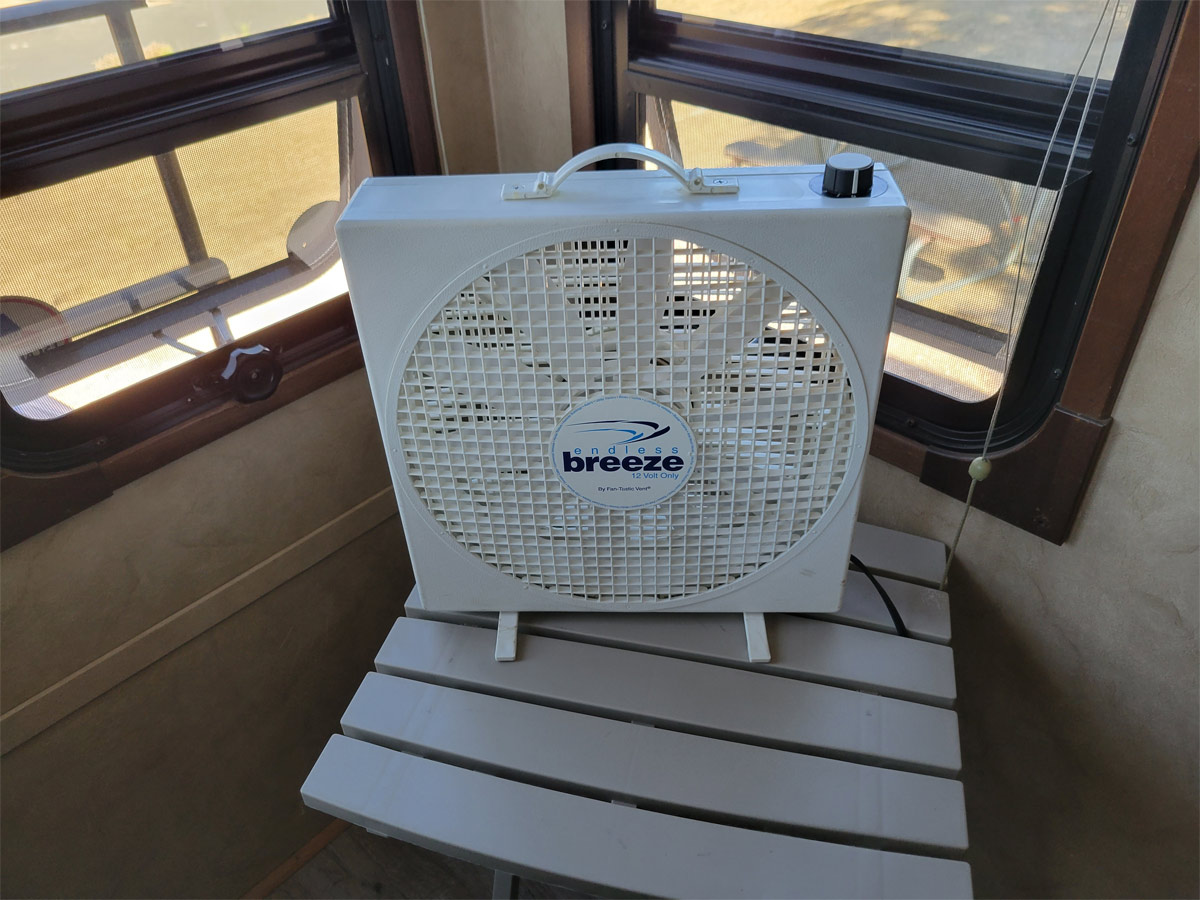
The Endless Breeze is a well-built fan that measures only 14 ¼ x 13 ½ x 3 5/8 inches and has rotating legs to allow positioning on most surfaces. We keep it next to the rear side window in the living room, allowing the air to circulate toward the front. It’s also used extensively to help circulate the cold air from the rear air-conditioner. On hot days, without hookups, the air from this fan helps make the living area more tolerable.
Nor is it very power hungry; when checked with an induction multi-meter it pulled 2.3 amps (DC) on the fastest fan speed, 1.8 amps on the middle setting and only 1.4 amps on the first level, which takes a small bite out of a decently-sized battery bank. The fan is said to hit 900 CFM, which is equivalent to 10-mph wind speed. But regardless of the specs, it provides plenty of air movement to make a considerable difference in the comfort level.

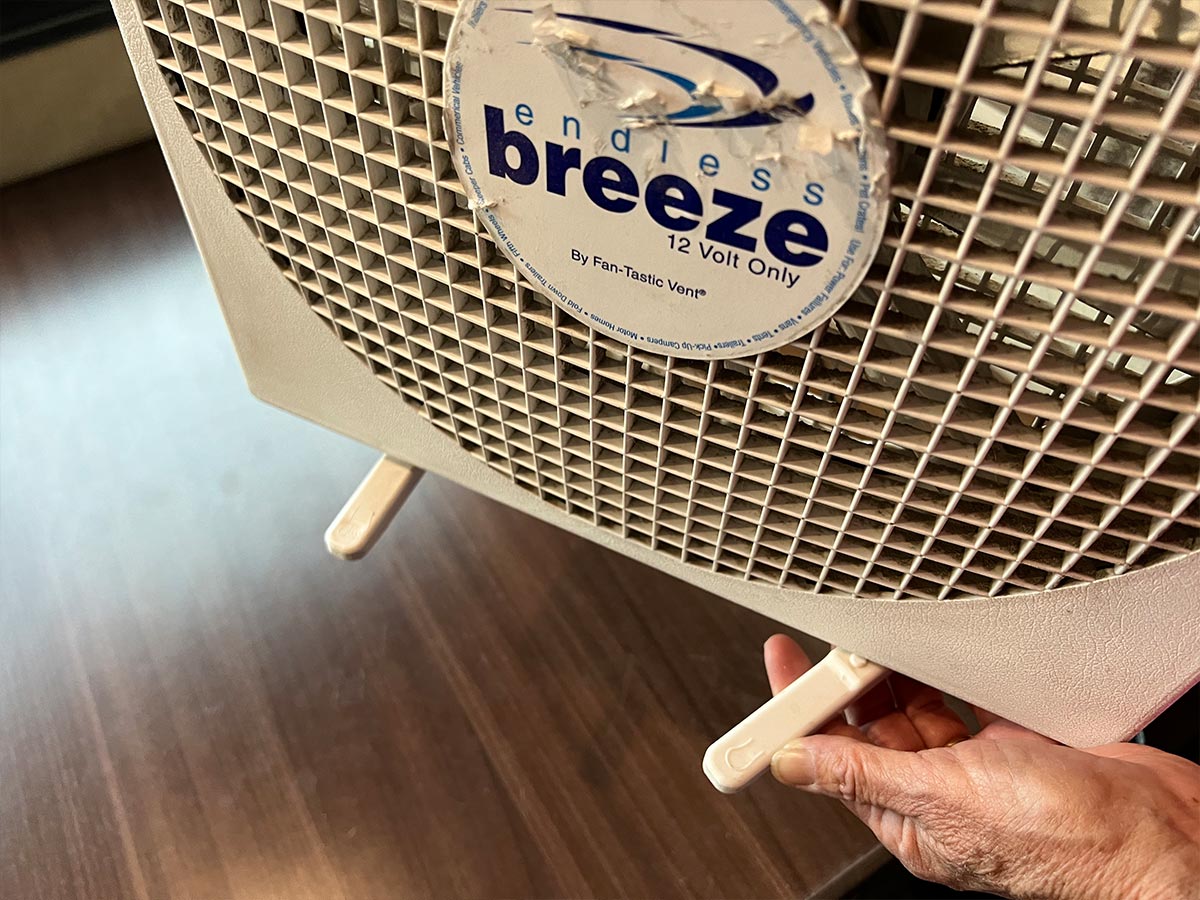
Other uses for this fan include moving bugs away when on the patio and helping create air flow when placed against an open window. I’m sure owners will find this fan just about indispensable. And it’s durable: It’s been running almost every day for more than five years in our rig and 16 years in Technical Director Bill Gehr’s fifth wheel, and in both cases has never even hiccupped.
But you get what you pay for; it’s well built by Fan-Tastic Vent, which has a strong reputation within the RV industry. Figure on playing $78-130, depending on the retailer and availability. It comes with a 68-inch power cord, but an optional 8-foot extension is available for around $20 online. Also, a converter can allow plugging into 120-volt AC power, but it’s on the expensive side at $90-100 and probably not needed for most owners.
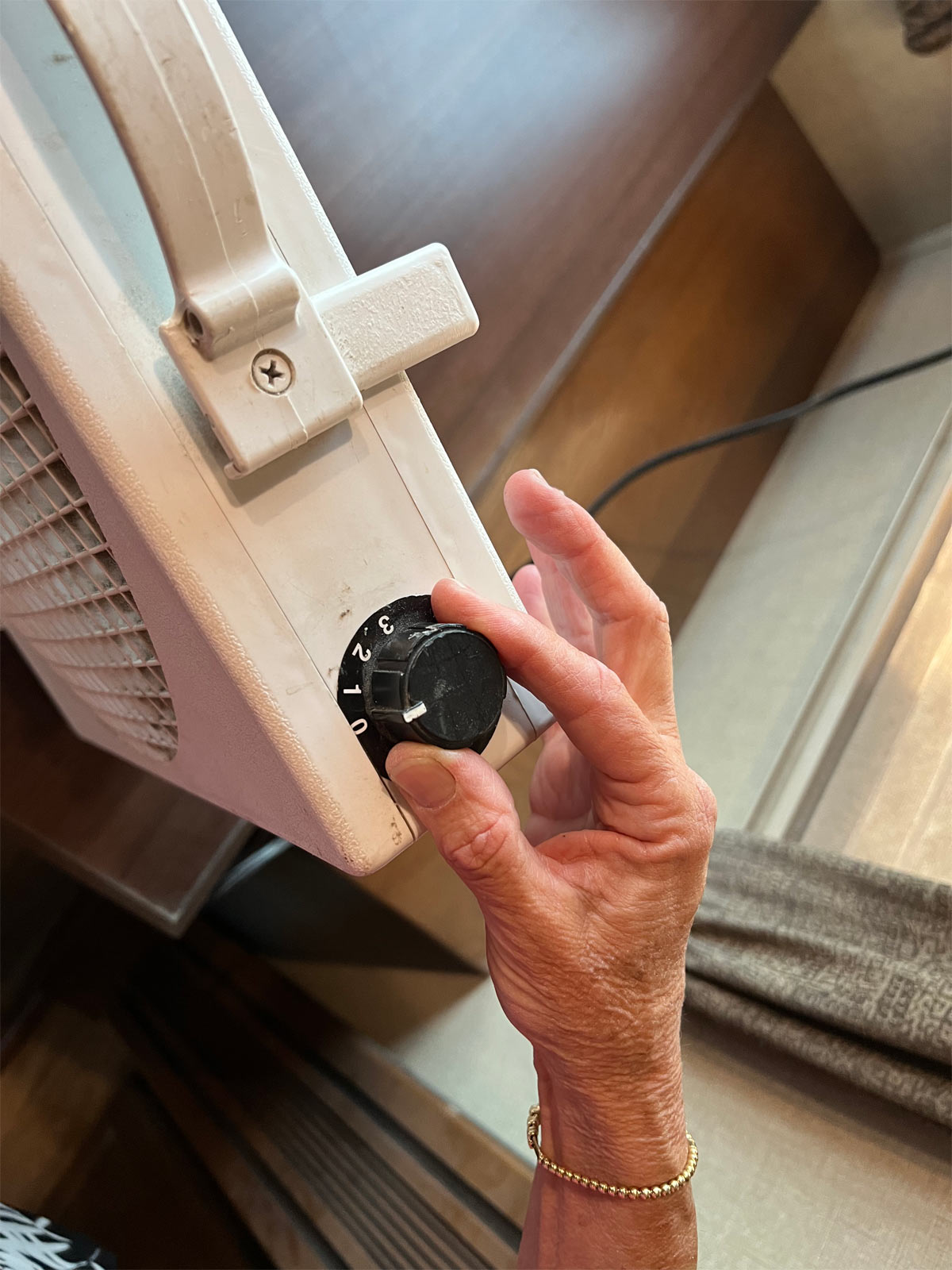
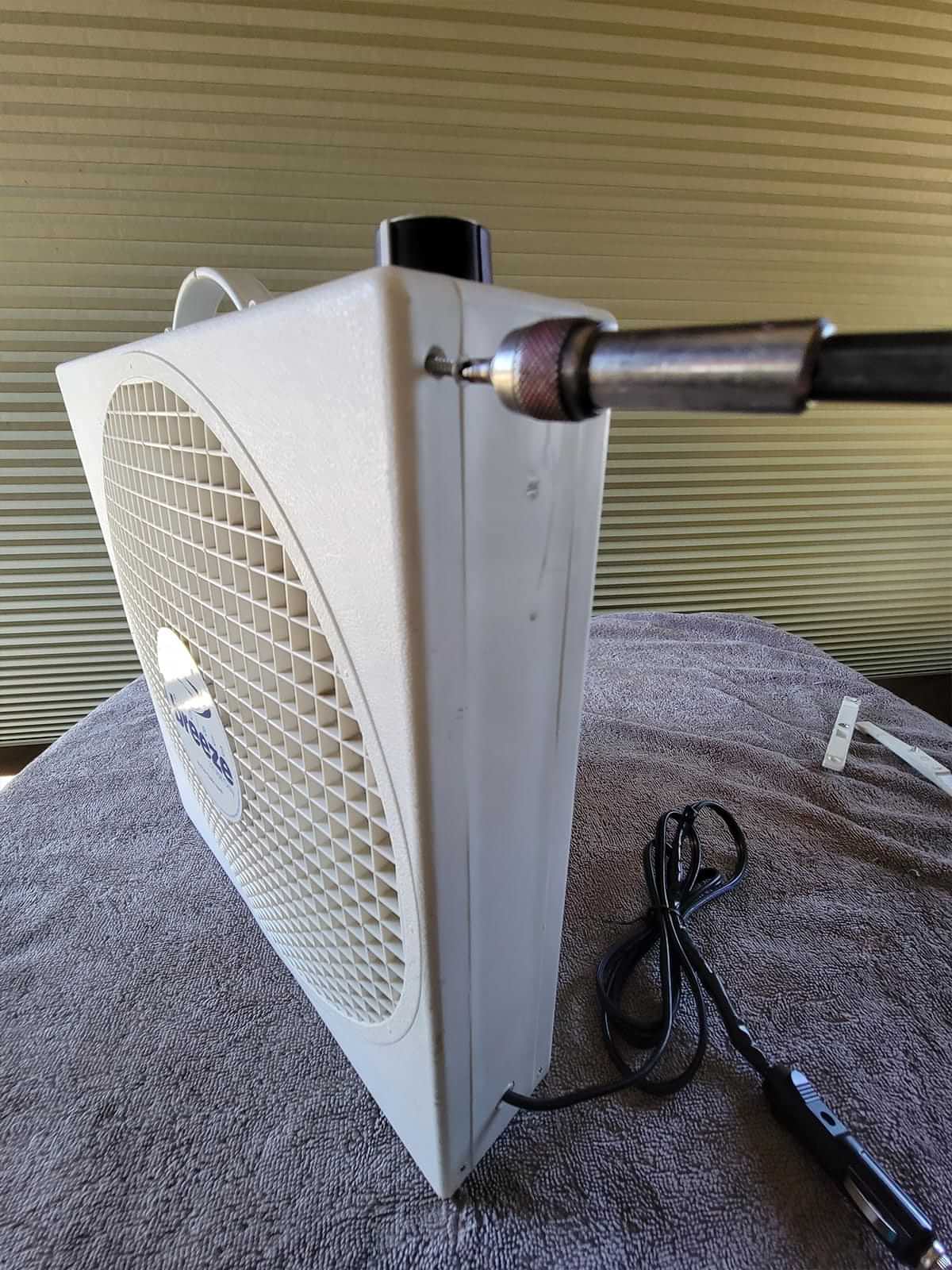
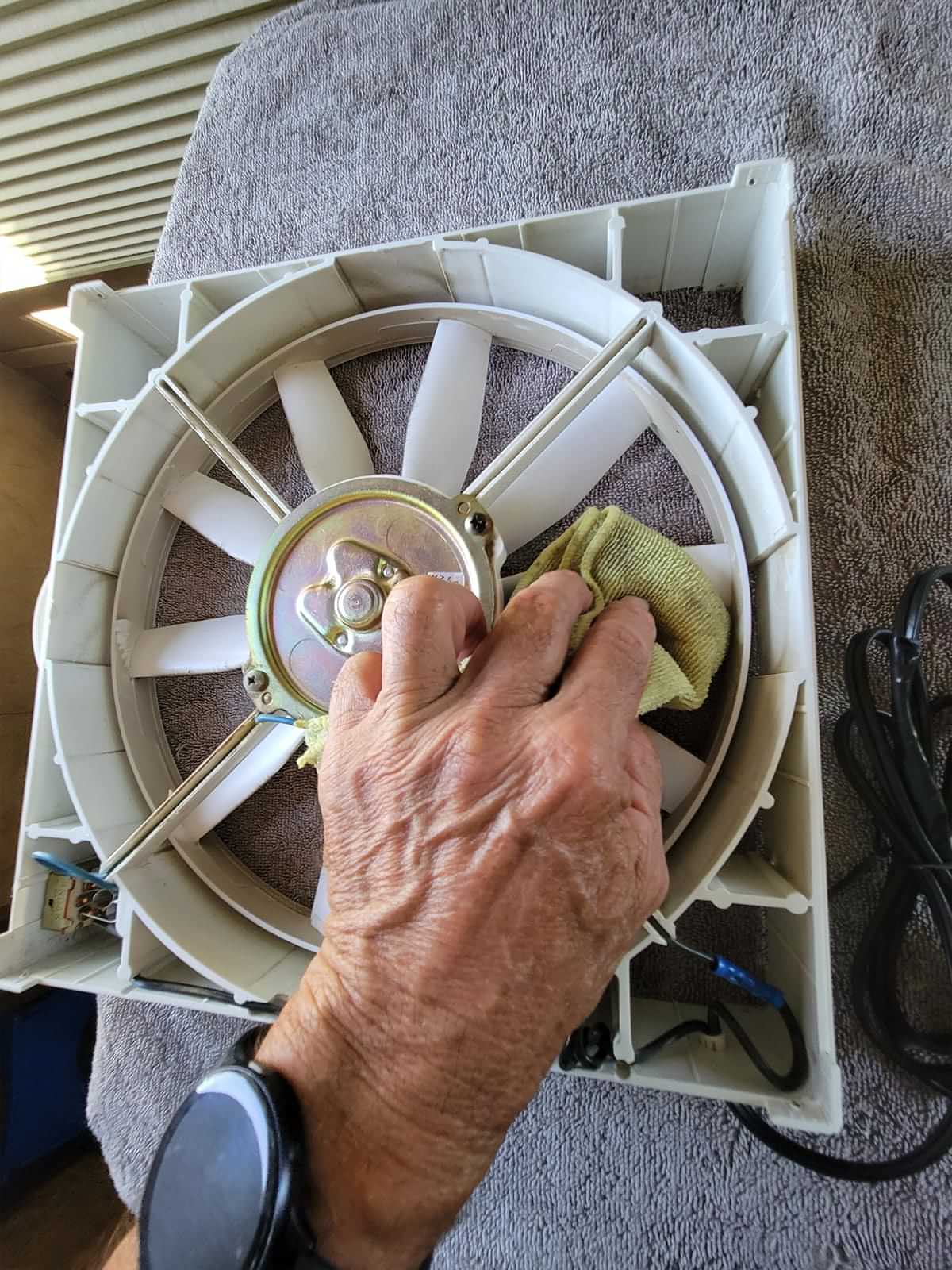
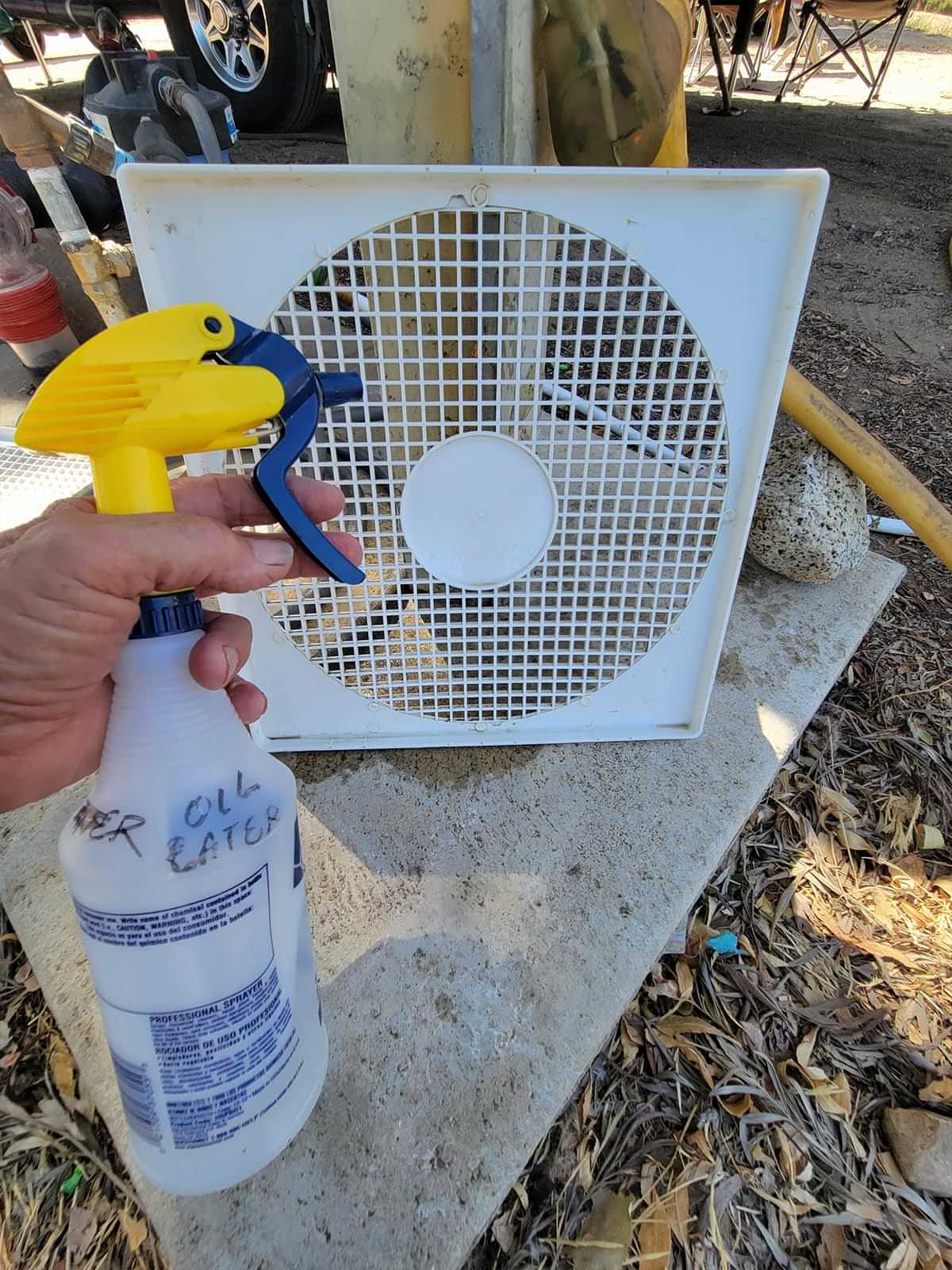
If the fan is used extensively, it will pick up quite a bit of dust and can be difficult to clean. The easiest method is to blow out the fan blades with compressed air, but if that’s not available you can take it apart and clean the blades and housing with a damp microfiber towel. Simply remove four screws on either edge of the fan and pry the two pieces apart, being careful not to break any of the plastic. Spray your favorite cleaner across either side of the towel lightly and wipe down the blades and housing. Be careful not to drip water or cleaning solution on the fan motor and/or the electrical leads. If you keep the fan clean, you won’t spread clumps of dust every time it’s moved.
Adding a fan seems like such an overly simple approach to improved comfort, but it works better than most people would expect. You’ll find that the efficiency of the air-conditioner will jump up a big notch — and moving ambient air through sleeping areas will make the difference between a good night’s sleep and tossing and turning in sweat.
Already a Subscriber? Click here for Access to the Full Issues.

